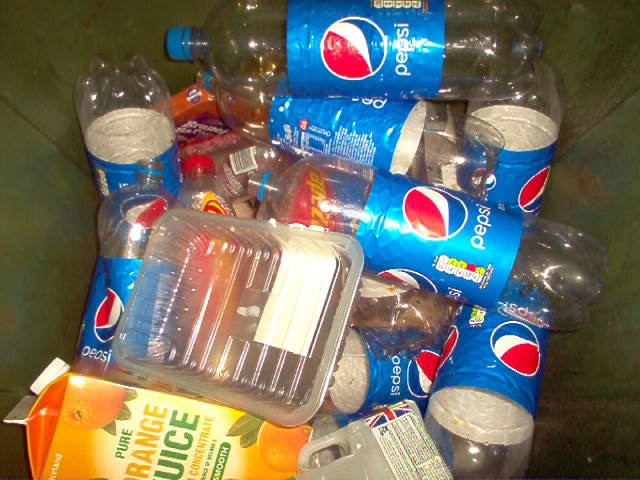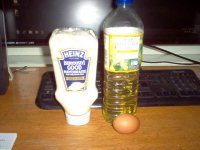Perhaps you could precis the technology to which you refer for me?There's a lot more there if you care to look.
I have been studying Disco-Pete's link with interest. Being scientifically trained, I was interested if the ideas, er, hold water. 🙂
A car that runs on tap water will certainly solve the Energy crisis, though we need a new interpretation of the Laws of Thermodynamics to nail it, IMO. I have productive fruit plants that appear to run entirely on water. Along with a suppressed cure for Cancer, I also noticed a mention that 2012 was when we ended a 5000 year Mayan Earth cycle and entered the new Age of Aquarius.
To confirm this I investigated the Epsom Derby Horserace of 2012:
2012 Epsom Derby - Wikipedia
1: CAMELOT (T: Aidan O'Brien)
2: MAIN SEQUENCE (T: David Langan)
3: ASTROLOGY (T: Aidan O'Brien)
I rest my case. All Happy Days. Aidan O'Brien's Ballydoyle horses continue to bring me happiness and wealth. 😎
Whilst investigating our recycling bins, apart from an alarming preponderance of Pepsi bottles (each containing a fattening 1/4 bag of sugar and not much else), I retrieved a tin of John Smith's beer and analysed it. I wonder if adding a beer widget to our fuel tanks would improve petrol engine efficiency? It clearly does something.
(I also noticed that recycled beer widgets would make excellent balls for my Quark modelling... which I am still working on. Win-Win.)
A car that runs on tap water will certainly solve the Energy crisis, though we need a new interpretation of the Laws of Thermodynamics to nail it, IMO. I have productive fruit plants that appear to run entirely on water. Along with a suppressed cure for Cancer, I also noticed a mention that 2012 was when we ended a 5000 year Mayan Earth cycle and entered the new Age of Aquarius.
To confirm this I investigated the Epsom Derby Horserace of 2012:
2012 Epsom Derby - Wikipedia
1: CAMELOT (T: Aidan O'Brien)
2: MAIN SEQUENCE (T: David Langan)
3: ASTROLOGY (T: Aidan O'Brien)
The 5th. Dimension said:When the moon is in the Seventh House
And Jupiter aligns with Mars
Then peace will guide the planets
And love will steer the stars
This is the dawning of the age of Aquarius
Age of Aquarius
Aquarius
Aquarius
Aquarius
Aquarius
I rest my case. All Happy Days. Aidan O'Brien's Ballydoyle horses continue to bring me happiness and wealth. 😎
Whilst investigating our recycling bins, apart from an alarming preponderance of Pepsi bottles (each containing a fattening 1/4 bag of sugar and not much else), I retrieved a tin of John Smith's beer and analysed it. I wonder if adding a beer widget to our fuel tanks would improve petrol engine efficiency? It clearly does something.
(I also noticed that recycled beer widgets would make excellent balls for my Quark modelling... which I am still working on. Win-Win.)
Attachments
Thanks for that informative link.
Disco-Pete talks of an in-car system where an alternator powers an electricity-to-hydrogen generator that powered the engine that ran the alternator that...
This would act as a dynamic brake that would stop the car in less than its coasting distance!
A fantasy claim such as that would appear to violate the laws of thermodynamics, energy conversion etc. etc. etc..
You seem to not be able to fathom the sequence of events taking place in an internal combustion engine.
1.) cylinder is filled with air/fuel mixture.
2.) spark from battery(charged by alternator) ignites air/fuel mixture.
3.) Voila! Kabababoom! Combustion.
4.) Clearly not rocket science, but I could elaborate if you're up to it. 🙂
5.) Sometimes the simplest things are the toughest to grasp.
6.) Sometimes people tend to compensate for their lack of understanding in a dismissive attitude.
1.) cylinder is filled with air/fuel mixture.
2.) spark from battery(charged by alternator) ignites air/fuel mixture.
3.) Voila! Kabababoom! Combustion.
4.) Clearly not rocket science, but I could elaborate if you're up to it. 🙂
5.) Sometimes the simplest things are the toughest to grasp.
6.) Sometimes people tend to compensate for their lack of understanding in a dismissive attitude.
6.) Sometimes people tend to compensate for their lack of understanding in a dismissive attitude.
I find this frivolous and vexatious.
We all know how an internal combustion engine works, Pete! 
The fuel is contained in a tank that must be refilled at regular intervals.
What you haven't explained is how this works: "Nothing changes except the fuel which is produced on demand via an electronic circuit enacting electrolysis in real time as the engine requires it, in the volume required."
Until you can, I deem the matter closed.

The fuel is contained in a tank that must be refilled at regular intervals.
What you haven't explained is how this works: "Nothing changes except the fuel which is produced on demand via an electronic circuit enacting electrolysis in real time as the engine requires it, in the volume required."
Until you can, I deem the matter closed.
My understanding from motorbiking days was you just need fuel, spark and air to get your bike going. Simple as.
What surprised me was how inefficient modern bikes are. Gone are the days of 120 mpg from a 125CC. It all gets guzzled up by lean, low pollution design. 😕
The Carnot cycle sets efficiency limits on transferring high temperature heat to a low temperature reservoir and extracting useful work.
Carnot cycle - Wikipedia
About 30% is the best you can do in a modern power plant when making electricity from any fuel. The rest is waste heat which is occasionally used in neighbourhood heating schemes.
Cleaner fuels and generators might help. Smaller cars, more home insulation, solar panels of some description. But you are not even home and dry there. CO2 is only a third of greenhouse gases. Nitrous Oxides and Methane are just as bad.
TBH, I thought this site was unscientific hokum:
https://fuel-efficient-vehicles.org/energy-news/
To be taken as seriously as the UK Column and Del Bigtree's Covid anti-vaxxer news. Which is to say, not to be taken seriously at all. 😀
What surprised me was how inefficient modern bikes are. Gone are the days of 120 mpg from a 125CC. It all gets guzzled up by lean, low pollution design. 😕
The Carnot cycle sets efficiency limits on transferring high temperature heat to a low temperature reservoir and extracting useful work.
Carnot cycle - Wikipedia
About 30% is the best you can do in a modern power plant when making electricity from any fuel. The rest is waste heat which is occasionally used in neighbourhood heating schemes.
Cleaner fuels and generators might help. Smaller cars, more home insulation, solar panels of some description. But you are not even home and dry there. CO2 is only a third of greenhouse gases. Nitrous Oxides and Methane are just as bad.
TBH, I thought this site was unscientific hokum:
https://fuel-efficient-vehicles.org/energy-news/
To be taken as seriously as the UK Column and Del Bigtree's Covid anti-vaxxer news. Which is to say, not to be taken seriously at all. 😀
Attachments
I read that the widget is a nitrogen filled capsule - the full story of what it does in a can of Guinness is told here:I wonder if adding a beer widget to our fuel tanks would improve petrol engine efficiency? It clearly does something.
How the Guinness Ball Widget Makes Your Beer Taste Better
A widget is a hollow, spherical piece of plastic with a tiny hole in it.
During the canning process, brewers add pressurized nitrogen to the brew, which trickles into the hole along with a little bit of beer. The entire can is then pressurized.
When you open the can, the pressure inside the can drops to equalize with the pressure in the room. Since the pressure inside the widget is still much higher than the pressure in the beer around it, the nitrogenated beer from inside the widget squirts into the beer — providing a burst of tiny bubbles of nitrogen gas that rise to the top of beer, giving it a thick, creamy head you'd get straight from the tap.
You can as MITsound has put it, frivolously deem as you wish, however I did explain it clearly enough for others to have paid enough attention to come to a conclusion. Something you apparently have failed to do yet insist on your dismissive attitude.We all know how an internal combustion engine works, Pete!
The fuel is contained in a tank that must be refilled at regular intervals.
What you haven't explained is how this works: "Nothing changes except the fuel which is produced on demand via an electronic circuit enacting electrolysis in real time as the engine requires it, in the volume required."
Until you can, I deem the matter closed.
The interest in hydrogen (and the oxidiser oxygen) is that it is a light power source and fuel. The cycle splits water into gas with electrolysis, then later burns it or converts straight to electricity in a fuel cell. But not a free lunch.
This is good for cars and space rockets, which must carry fuel, since they can't run on mains power. Of course, it's not free energy.
Elon Musk's rockets burn hydrocarbons so are not CO2 neutral. Jeff Bezos' rockets possibly use hydrogen and hydrogen peroxide as fuel, so just produce water. Terrible problems storing most of these fuels. They need very cold temperatures.
Batteries hover around 60-90% efficiency. Most of them actually store hydrogen in metal hydride form. The most efficient and lightest is Lithium Ion, but that needs intelligent charging to work well, and because Lithium is highly flammable, some safety considerations.
The Laws of Thermodynamics say that you need turn 3L of Oil into heat to get the calorific equivalent of 1L as electricity or work in a power station. 30% efficiency. The same formula doubtless applies to cars running on cooking oil.
I did some sums on 1L of cooking oil at £1.09. That's 37,000 kJ of heat, 9,000 kCals. Or 10kWh in electrical terms.
Clearly for heating my home, it would be cheaper to burn cooking oil direct than pay for the electricity at around 15p per kWh. Like those old Paraffin heaters. Might kinda stink though. 😀
FWIW, LED light bulbs are around 50% efficient on light production. Electric solar panels around 25% conversion.
The cold, hard equations.
This is good for cars and space rockets, which must carry fuel, since they can't run on mains power. Of course, it's not free energy.
Elon Musk's rockets burn hydrocarbons so are not CO2 neutral. Jeff Bezos' rockets possibly use hydrogen and hydrogen peroxide as fuel, so just produce water. Terrible problems storing most of these fuels. They need very cold temperatures.
Batteries hover around 60-90% efficiency. Most of them actually store hydrogen in metal hydride form. The most efficient and lightest is Lithium Ion, but that needs intelligent charging to work well, and because Lithium is highly flammable, some safety considerations.
The Laws of Thermodynamics say that you need turn 3L of Oil into heat to get the calorific equivalent of 1L as electricity or work in a power station. 30% efficiency. The same formula doubtless applies to cars running on cooking oil.
I did some sums on 1L of cooking oil at £1.09. That's 37,000 kJ of heat, 9,000 kCals. Or 10kWh in electrical terms.
Clearly for heating my home, it would be cheaper to burn cooking oil direct than pay for the electricity at around 15p per kWh. Like those old Paraffin heaters. Might kinda stink though. 😀
FWIW, LED light bulbs are around 50% efficient on light production. Electric solar panels around 25% conversion.
The cold, hard equations.
Attachments
Last edited:
I am surprised cooking oil is that calorific Steve (I’m no expert in these things - just asking BTW). IIRC, 1 kg of coal generates about 500 Wh by way of a reference point.
Oils and fats are an extremely efficient way of storing energy - Mother Nature had this all worked out billions of yrs ago.
It would be quite cool if we could convert the energy generated in plants (about 8-10x all of the human energy production daily) via the ATP based process directly into energy for our uses. Currently, the only way we can get at it is via post production biomatter in the form of wood that we burn or by rotting down biomatter to generate heat and gas.
(BTW, I have a serious sensitivity to raw egg - I gag on it and can taste it in ordinary Mayo and a whole lo t of other stuff like Haagen Daaz Vanilla ice cream. I’ve gone over to the Heinz Vegan Mayo. Superb - no raw egg. )
Oils and fats are an extremely efficient way of storing energy - Mother Nature had this all worked out billions of yrs ago.
It would be quite cool if we could convert the energy generated in plants (about 8-10x all of the human energy production daily) via the ATP based process directly into energy for our uses. Currently, the only way we can get at it is via post production biomatter in the form of wood that we burn or by rotting down biomatter to generate heat and gas.
(BTW, I have a serious sensitivity to raw egg - I gag on it and can taste it in ordinary Mayo and a whole lo t of other stuff like Haagen Daaz Vanilla ice cream. I’ve gone over to the Heinz Vegan Mayo. Superb - no raw egg. )
Last edited:
Just wading through chapter 13 of my ‘Motion Mountain’ Book 1 “On heat and motion reversal invariance” which covers entropy, the difference between heat and temperature, thermostatics, thermodynamics, the quantum of action etc. absolutely superb - opened me up to a whole new set of ideas and things to think about.
I finally understand what Bolzmsnn’s content actually means.
Anecdote from the book: Boltzmann committed suicide and was buried in an unmarked grave. Apparently Planck used is own money and time to locate it and give him a proper burial and marked grave.
I finally understand what Bolzmsnn’s content actually means.
Anecdote from the book: Boltzmann committed suicide and was buried in an unmarked grave. Apparently Planck used is own money and time to locate it and give him a proper burial and marked grave.
Below is my simple understanding which avoids invoking the ratio of the universal molar gas constant to the Avagadro constant. 😱
Boltzmann's constant is just that, a constant of proportionality.
The kinetic energy (E) of an ideal gas molecule is directly proportional to the absolute temperature (T).
or, E ∝ T
or, E = kT where k is Boltzmann's constant
or, k = E/T
To put it simply, Boltzmann's constant tells us the number of joules of kinetic energy an ideal gas molecule gains when the absolute temperature increases by one kelvin.
k = 1.3807 x 10^-23 joule per kelvin
Boltzmann's constant is just that, a constant of proportionality.
The kinetic energy (E) of an ideal gas molecule is directly proportional to the absolute temperature (T).
or, E ∝ T
or, E = kT where k is Boltzmann's constant
or, k = E/T
To put it simply, Boltzmann's constant tells us the number of joules of kinetic energy an ideal gas molecule gains when the absolute temperature increases by one kelvin.
k = 1.3807 x 10^-23 joule per kelvin
Clearly "Motion Mountain" must be added to my list of untrustworthy and dubious sources if you think a kg of Coal produces 500Wh!
I have it all figured. 😎
Coal is essentially Carbon with a strong whiff of very toxic impurities. 5kWh per kilo for fine Welsh coal. Worse for that filthy brown lignite stuff that Johhny Foreigner burns.
A kg of dry flour produces around 5kWh. A carbohydrate. Carbon, 2X hydrogen and a whiff of Oxygen essentially. My latest English Pizza creation is a healthy and satisfying 1200 Calories. Contains Bacon too!
Oil is the stuff for me! Essentially Carbon and Hydrogen with a massive 10kWh per kilo. Methane gas is about the same. Curiously old Pepsi bottles must be chemically similar, as in polyethylene.
I must phone Mr. Boris and tell him to burn all the Pepsi bottles we can get our hands on. Free too!

Oh wait... we do burn them in our local Portsmouth incinerator for local heating. How wise we are! Britain leading the way as usual. 😎
Crisis, what Crisis? 😀
Interesting explanation from Galu of Boltzmann's constant. What does this mean? It means light gases and molecules have just as much kinetic energy per mole (6X 10^23 atoms or molecules according to Avogadro) as heavy ones at a given temperature. I'd never really considered that.
So a mole of deuterium (heavy hydrogen) molecules (2X Atomic number 2) is thermodynamically indistinguishable from a mole of Helium 4 atoms. It weighs 4 kilos.
It's entropy I struggle with, TBH.
I have it all figured. 😎
Coal is essentially Carbon with a strong whiff of very toxic impurities. 5kWh per kilo for fine Welsh coal. Worse for that filthy brown lignite stuff that Johhny Foreigner burns.
A kg of dry flour produces around 5kWh. A carbohydrate. Carbon, 2X hydrogen and a whiff of Oxygen essentially. My latest English Pizza creation is a healthy and satisfying 1200 Calories. Contains Bacon too!
Oil is the stuff for me! Essentially Carbon and Hydrogen with a massive 10kWh per kilo. Methane gas is about the same. Curiously old Pepsi bottles must be chemically similar, as in polyethylene.
I must phone Mr. Boris and tell him to burn all the Pepsi bottles we can get our hands on. Free too!
Oh wait... we do burn them in our local Portsmouth incinerator for local heating. How wise we are! Britain leading the way as usual. 😎
Crisis, what Crisis? 😀
Interesting explanation from Galu of Boltzmann's constant. What does this mean? It means light gases and molecules have just as much kinetic energy per mole (6X 10^23 atoms or molecules according to Avogadro) as heavy ones at a given temperature. I'd never really considered that.
So a mole of deuterium (heavy hydrogen) molecules (2X Atomic number 2) is thermodynamically indistinguishable from a mole of Helium 4 atoms. It weighs 4 kilos.
It's entropy I struggle with, TBH.
By extrapolation, it means that the molecules of 'light' gases have a greater average velocity than the molecules of 'heavy' gases.Interesting explanation from Galu of Boltzmann's constant. What does this mean? It means light gases and molecules have just as much kinetic energy per mole (6X 10^23 atoms or molecules according to Avogadro) as heavy ones at a given temperature. I'd never really considered that.
This is why hydrogen effuses out of a rubber balloon faster than air or oxygen.
G450: Effusion – Relative Effusion Rates of H2, He, and O2 | Lecture Demonstration Manual General Chemistry | University of Colorado Boulder
Graham's law - WikipediaRate of effusion for gas 1: rate of effusion for gas 2 = √M2:√M1 (M = molecular or atomic weight)
forgive me Steve - what's a decimal point between friends? 😀
Don't blame MM - my bad.
See the comparison between coal, oil and nuclear :0
Fuel comparison - ENS
Don't blame MM - my bad.
See the comparison between coal, oil and nuclear :0
Fuel comparison - ENS
- Status
- Not open for further replies.
- Home
- Member Areas
- The Lounge
- What is the Universe expanding into..







